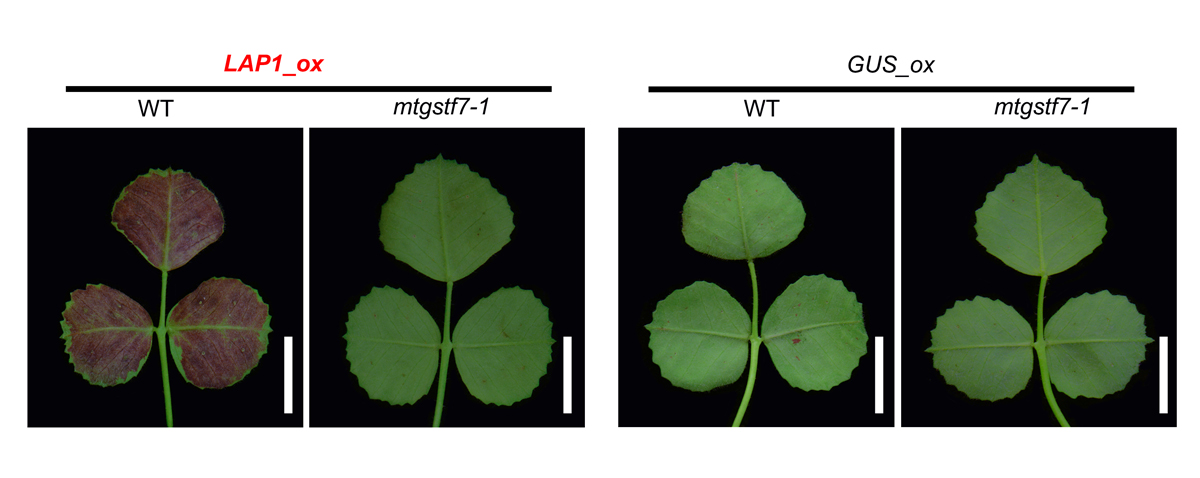
Chinese Researchers Identify Gene for Engineering Anthocyanins in Plants
March 30, 2022| |
Researchers from the Xishuangbanna Tropical Botanical Garden (XTBG) of the Chinese Academy of Sciences (CAS) have discovered a key gene regulating the biosynthesis of anthocyanins and proanthocyanidins.
In a study published in the Journal of Experimental Botany, the researchers showed that MtGSTF7, a TT19-like glutathione S-transferase (GST) gene, was activated by the anthocyanin regulator LAP1 in the accumulation of anthocyanins, but not proanthocyanins, in the model legume plant Medicago truncatula.
The researchers found that MtGSTF7 plays a critical role in anthocyanin accumulation in M. truncatula. In addition, MtGSTF7 could help rescue anthocyanin-deficient mutants. They also found that LAP1 could bind to the MtGSTF7 promoter to activate its expression. Ectopic expression of MtGSTF7 in tt19 mutants could rescue their anthocyanin deficiency, but not their proanthocyanin defect.
For more details, read the article in CAS Newsroom.
| |
You might also like:
- CRISPR-Cas9 Used to Alter Anthocyanin Production in Black Rice
- Chinese Scientists Develop High Antioxidant Purple Rice thru Genetic Engineering
- Scientists Develop GM Anthocyanin-Expressing Citrus
Biotech Updates is a weekly newsletter of ISAAA, a not-for-profit organization. It is distributed for free to over 22,000 subscribers worldwide to inform them about the key developments in biosciences, especially in biotechnology. Your support will help us in our mission to feed the world with knowledge. You can help by donating as little as $10.
-
See more articles:
-
News from Around the World
- Report Forecasts Trends in Transgenic Seeds Market for 2022-2028
- Trend Towards Favorable Discourses About GMOs Seen In Traditional and Social Media Platforms
- GM Maize ‘Ruifeng 125' Exhibits Excellent Protection Against Corn Borers
- Chinese Researchers Identify Gene for Engineering Anthocyanins in Plants
- Research Team Led by NTU Singapore Produces Oil from Microalgae to Replace Palm Oil in Food Production
- Hardy Wild Grass Could Help Save the World's Bread
- UK Prepares for Field Trials of GM and Gene-Edited Barley
-
Research Highlights
- Researchers Analyze Maize's Fertilizer Uptake to Improve Yields
-
Read the latest: - Biotech Updates (December 17, 2025)
- Gene Editing Supplement (December 17, 2025)
- Gene Drive Supplement (February 22, 2023)
-
Subscribe to BU: - Share
- Tweet

